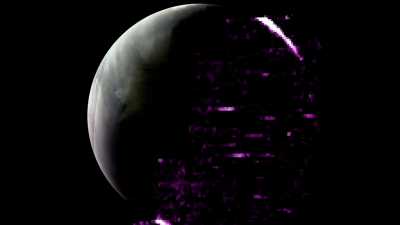NASA’s MAVEN (Mars Atmosphere and Volatile Evolution) spacecraft has captured our imaginations with awe-inspiring imagery of auroras rippling across the Martian atmosphere.
Unlike Earth’s auroras, which paint vibrant streaks primarily across the polar regions, Mars’ lack of a strong global magnetic field allows these curtains of light to dance across the entire sky, transforming the Red Planet into a celestial theater.

An Unprecedented Auroral Spectacle
The observations, captured between February 3-5, February 7-10, and February 15-16, 2024, mark a significant milestone in our understanding of Martian auroras. Nick Schneider, from the University of Colorado’s Laboratory for Atmospheric and Space Physics (LASP), dubbed this flurry of activity an “aurora hat trick” – the first time scientists have witnessed three distinct episodes of global auroras on Mars within a single month. This surge in auroral activity highlights the dynamic nature of Mars’ interaction with the Sun and the delicate interplay between solar storms and the Martian atmosphere.
Solar Storms Ignite the Martian Night Sky
These captivating auroral displays are ignited by the Sun’s fury. Coronal mass ejections (CMEs), colossal eruptions of solar plasma hurled towards Mars, trigger the celestial light show. When these energetic particles collide with Mars, the planet’s weak magnetic field is unable to mount a complete defense. The charged particles then bombard Mars’ atmosphere, primarily at the polar regions. Here, they collide with atmospheric molecules like oxygen and nitrogen, infusing them with energy. As these excited molecules return to their ground state, they release energy in the form of dazzling light, transforming the Martian night sky into a canvas splashed with vibrant hues of green, red, and violet.
MAVEN: Unveiling the Martian Connection
MAVEN, launched in 2014, has been meticulously studying the Martian atmosphere since entering orbit. Equipped with sophisticated instruments, MAVEN has provided scientists with a treasure trove of data, including these incredible ultraviolet images of the Martian auroras. By analyzing these images, scientists can glean valuable insights into how the solar wind interacts with the Martian atmosphere. This knowledge is critical for comprehending the Martian environment and its potential for supporting life. The presence of auroras on Mars suggests that the upper atmosphere is still interacting with charged particles from the Sun, hinting at the possibility of a tenuous connection to a weak planetary magnetic field.
Beyond the Beauty: A Window into the Martian Environment
The vibrant auroras on Mars are more than just a visually stunning phenomenon. They serve as a window into the complex physical processes at play within the Martian atmosphere. By studying these auroras, scientists can learn more about the composition and density of the upper atmosphere, the role of solar wind in shaping the Martian environment, and the potential for atmospheric escape over time. This knowledge is crucial for piecing together the history of Mars and its potential for harboring life.
As we delve deeper into the mysteries of Mars, these captivating auroras serve as a powerful reminder of the interconnectedness within our solar system. The Sun’s activity, millions of kilometers away, can spark a dazzling light show on a distant world, reminding us of the dynamic forces that shape the celestial bodies around us. The continued exploration of Mars, with missions like MAVEN paving the way, promises to unveil more about these captivating displays and the secrets they hold about the Red Planet’s past, present, and potential future.



















